|
Cantata BWV 39
Brich dem Hungrigen dein Brot
Examples from the Score |
|
Mvt. 1 Chorus | Mvt. 3 Alto Aria | Mvt. 4 Bass Aria / Arioso | Mvt. 5 Alto Recitative |
| |
|
Mvt. 1 Chorus |
|
The appearance of the beginning of this mvt. is very different from just about any other cantata. Note that there are no special marks indicating how these pairs of notes should be played; it is all done by means of the numerous rests that Bach used here. Notice also the overlapping of the three tiers representing the groupings of instruments: recorders, oboes, strings; this way the continuity is not lost, while the 'breaking of bread' is still heard. |
|
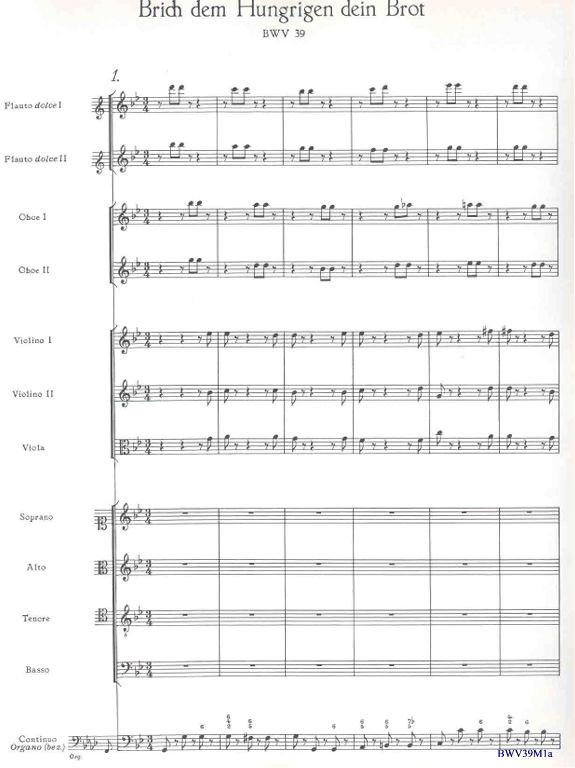
|
|
Schweitzer dispels the idea of 'breaking bread' in favor of the tottering steps of the weak and gives as the example the first notes sung by the choir. I personally think the editor chose the wrong example to display (the opening few notes sung by the choir). Schweitzer, however, did hear this effect, which I found in the basso continuo, once at the end of the ritornello and twice in the first section under the word, "Elend" ("suffering"). Look at each measure carefully, then you will see the irregularity in each sweep of notes going upward before it plops down back to the starting note from which it again tries to lift itself upward. Musically each figure is a variation of the one before so as to create irregularity. Here Schweitzer's 'tottering' motif becomes more like a 'falling-down-and-getting-up-again' motif. A very clever, deliberate musical picture invention! |
|

|
|
In the next example you see the first notes sung by the choir with the sopranos paired with altos entering first, then the tenors together with the basses. The situation is reversed a few bars later. Schweitzer's editor inserted this vocal figure as an illustration for the 'tottering' weak. My imagination is not stimulated by this idea here. I still think the idea of 'breaking bread' is the motif being pictured. |
|
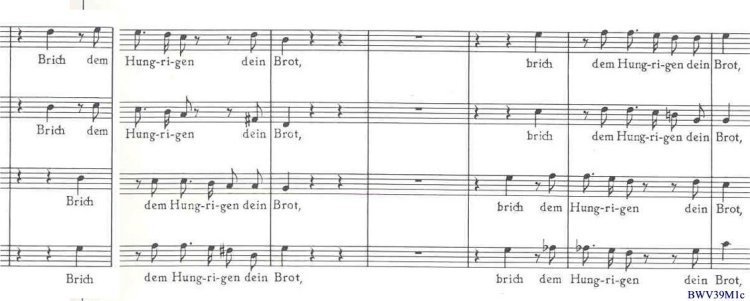
|
|
For comparison observe this sample where this section is repeated later on. The entrances are all reversed in a mirror image of the first. |
|

|
|
The same type of reversal occurs with the stretto-like entrances ushering in the word, "Elend" ("suffering"). Here is the first time: |
|

|
|
and now the second: |
|
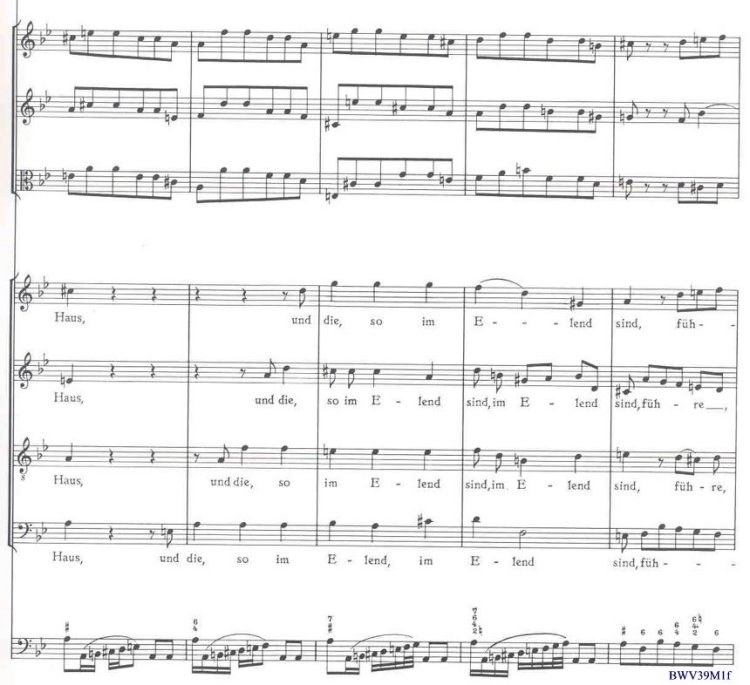
|
|
The next example shows the sweep of activity, first downward, then upward on the word, "führe" ("lead"). In between is a sad section on "Elend" ("suffering") with the two-note sigh motif in the orchestra. |
|
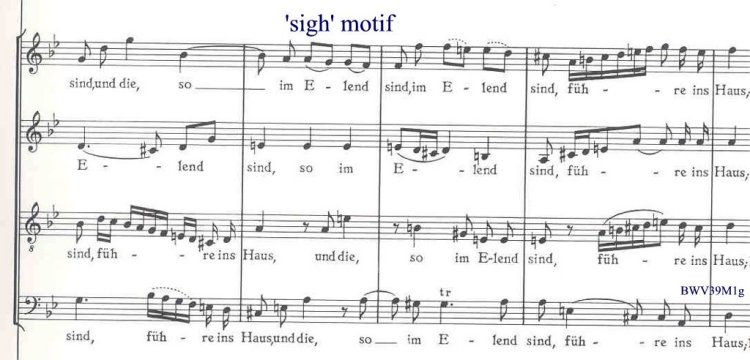
|
|
A fugal motif is made to fit perfectly the words being sung. Notice what happens on the word "Elend" ("suffering") and then the "führen" ("lead") motif that we saw earlier. This motif was definitely not a parody of any fugal theme in a secular cantata. Under those circumstances something inevitably is lost. |
|

|
|
Another very moving section on the word, "Elend" ("suffering") with heart-rending chromaticism. |
|
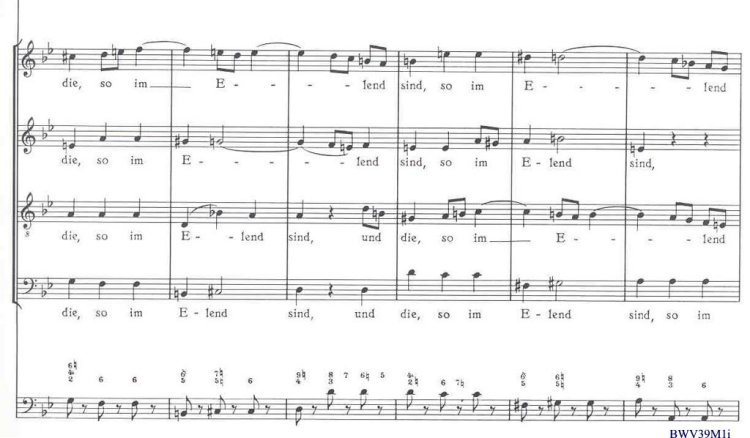
|
| |
|
Mvt. 3 Alto Aria |
|
Here are some two-note motifs left over from the 1st mvt. They seem to want to remind us of a connection to mvt. 1. |
|
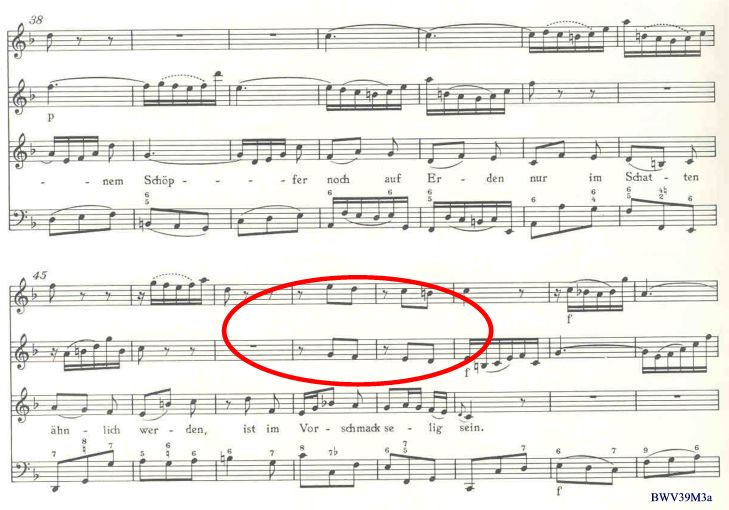
|
|
The first thing we see here is the 'sigh'-motif simultaneously in all parts except the basso continuo. Then there is the long melisma on the word "streuet" ("strew or scatter") the many notes representing the blessings that are being scattered like seeds falling downward to the earth, while above the 'breaking,' or as we saw in the commentary by Dürr, the 'distributing'-motif appears. On the word "dorten" ("over there") which is really pointing upward to heaven, notice the upward direction of the notes. Finally Bach creates a pun on the word "ein" ("in") which means 'in' here but also can mean 'one;' so Bach has the voice sing ONE very long note held for four measures. |
|
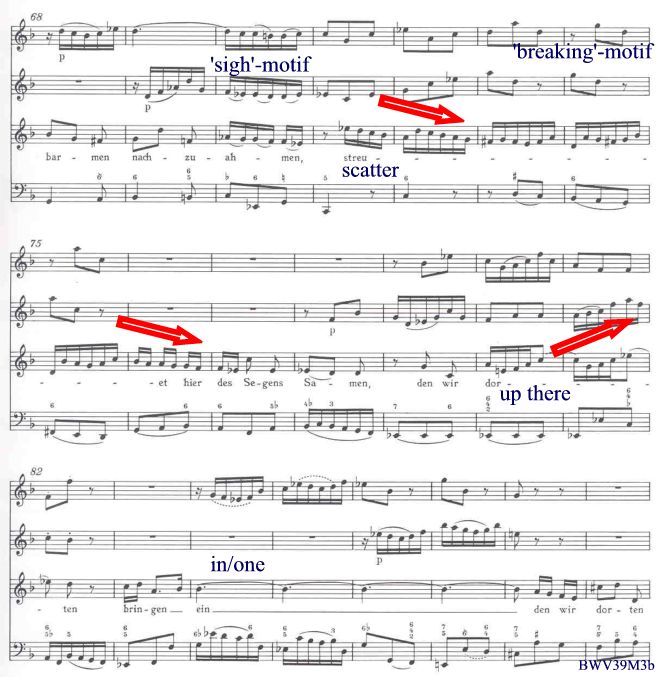
|
|
The two-note 'sigh'-motif appears just before the voice enters, possibly hinting at a fervent desire that the text expresses. |
|

|
| |
|
Mvt. 4 Bass Aria / Arioso |
|
This mvt. is not marked 'aria.' It is more in the style of an 'arioso.' The basso continuo essentially presents almost everything the bass will sing before he enters, including the all important "vergesset nicht" ("don't forget"). Notice how varied the melodic patterns are for these words each time they are sung. |
|
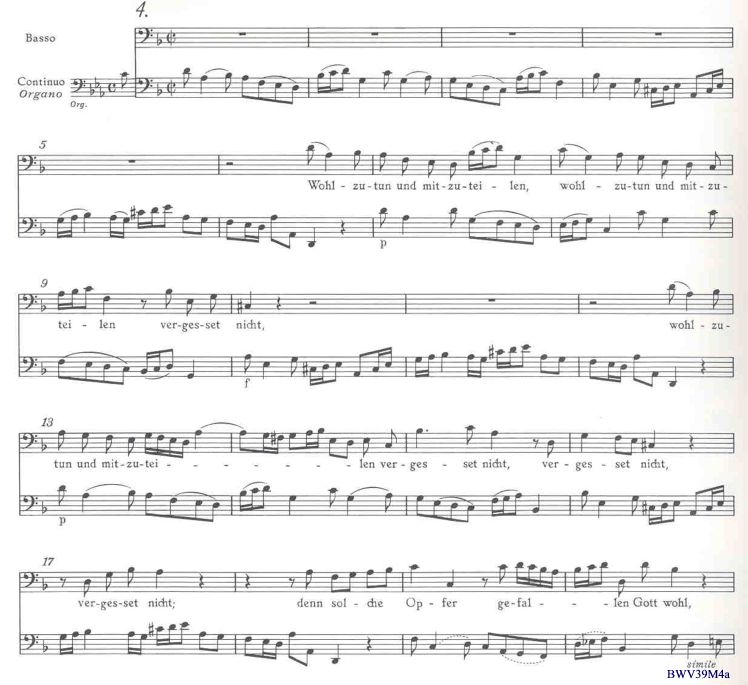
|
|
Here are the three "vergesset nicht"s, each set higher than the previous one thus raising the voice in pitch and volume so that the message gets across. |
|
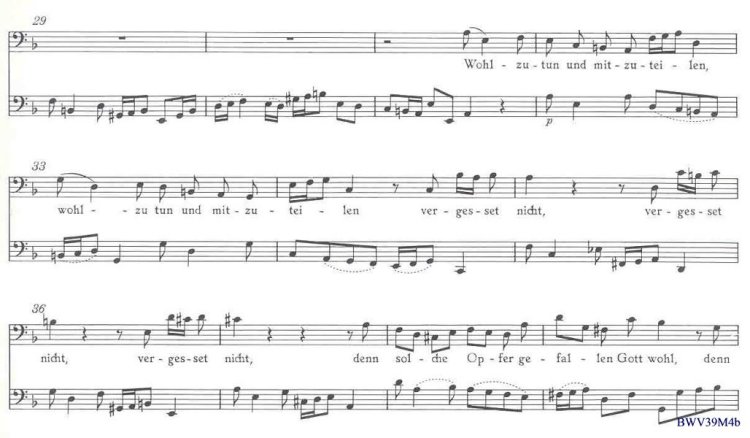
|
| |
|
Mvt. 5 Alto Recitative |
|
The reference to death which Voigt pointed out as being outstandingly beautiful, is set in the low part of the alto's range. |
|

|
| |
|
All snippets taken from NBA I/15
Contributed by Thomas Braatz (June 22, 2001) |